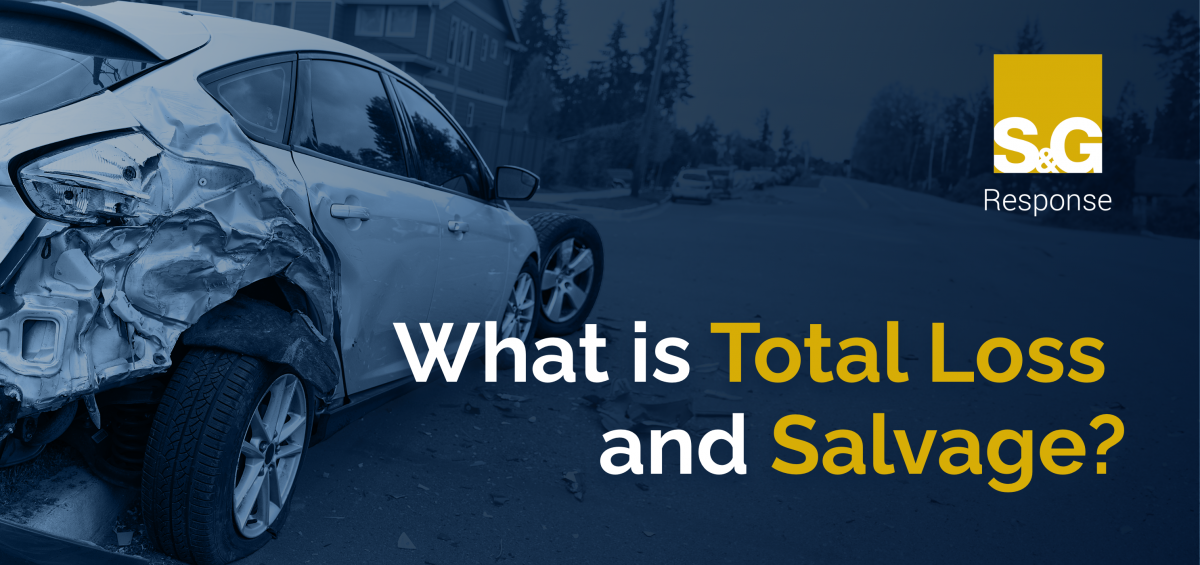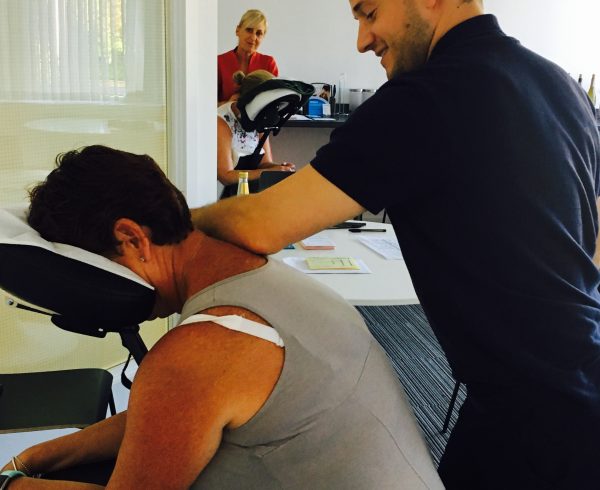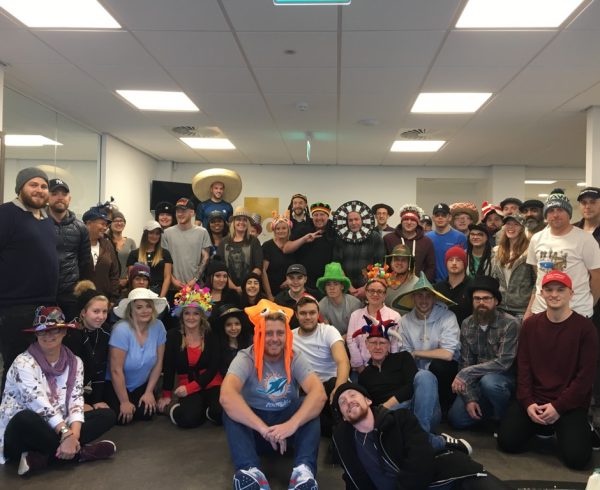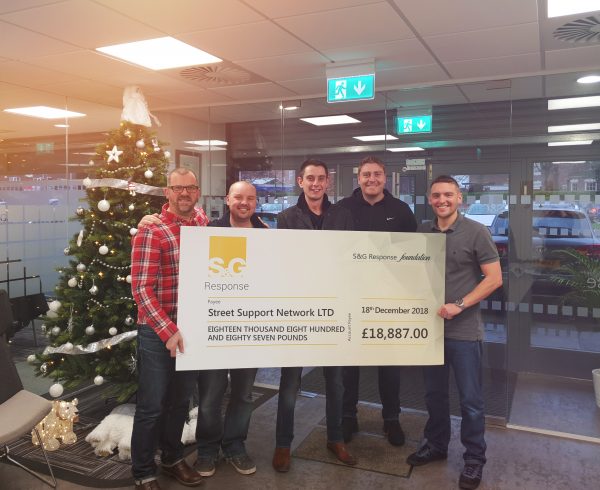In the dynamic landscape of the motor industry, insurers and fleet managers often grapple with the concept of total loss and salvage, as they both play a crucial role in determining the fate of damaged vehicles.
Understanding Total Loss and Salvage in the motor industry takes a nuanced understanding of the categories involved and their processes too, and both insurers and Fleet Managers can play a pivotal role in making informed decisions that balance financial considerations with environmental responsibility.
By embracing best practices in valuation, salvage management, and compliance, stakeholders can effectively navigate the complexities of total loss and salvage, contributing to a more sustainable and efficient motor industry.
So let’s explore this, and delve into the categories of total loss to uncover what happens to vehicles deemed as such.
Categories of Total Loss
Total loss in the motor industry refers to the condition where the cost of repairing a damaged vehicle exceeds its actual cash value. This determination is fundamental, as it influences the course of action to be taken with the vehicle.
However, there are several categories within total loss, each representing the extent of damage. These include:
- Actual Total Loss (ATL): where a vehicle sustains irreparable damage or is stolen and cannot be recovered. Typically, this is an absolute loss, leaving no possibility of repair.
- Constructive Total Loss (CTL): where the repair costs and the diminished value after repairs, exceed the vehicle’s market value. Despite being technically repairable, the financial feasibility of restoration for vehicles in this case is more often than not, impractical.
- Recovered Theft Total Loss (RTTL): where a stolen vehicle is found but has sustained significant damage, it may be declared a total loss.
Understanding Salvage
Once a vehicle is deemed a total loss, it enters the salvage phase. Salvage refers to the process of recuperating value from a damaged vehicle. This can involve selling the vehicle in its current state or extracting reusable components, but either way, the salvage process is categorised into two main types:
- Repairable Salvage: which means that vehicles have sustained damage, but the cost of repair is deemed feasible in relation to their market value.
This may be relevant, for example, if insurers choose to sell these vehicles to salvage yards, where they are often purchased by individuals or businesses specialising in vehicle restoration.
- Or Non-repairable or Parts-Only Salvage: which relates to vehicles that are typically damaged to an extent where repair is economically unviable.
Another example of this would be when salvage yards purchase these vehicles purely for the valuable parts they still contain.
What Happens to Total Loss Vehicles?
Total loss vehicles follow distinct paths based on their salvage value, and insurers often choose to auction off salvage vehicles to the highest bidder. These auctions appeal to diverse buyers, encompassing auto recyclers, rebuilders, and individuals seeking spare parts.
Though some salvage buyers purely specialise in the meticulous process of rebuilding and restoring vehicles only. In these circumstances and following the purchase of a salvage vehicle, salvage buyers will make any necessary repairs to restore it to roadworthy condition, often capitalising on resale opportunities in the process.
Finally, salvage yards may also opt to dismantle total loss vehicles completely, extracting valuable components such as engines, transmissions, and electronics. These salvaged parts can be marketed and sold individually and often for a hefty profit.
What do insurers and Fleet Managers need to be aware of when it comes to Total Loss and Salvage?
There are several key aspects here, the first of which being that having an accurate valuation is absolutely critical. This is because it plays such an important role in determining whether a damaged vehicle qualifies as a total loss in the first place, and so using the right valuation tools and methodologies can help to ensure a fair and comprehensive assessment.
Efficient handling of the salvage process is also vital when it comes to minimising financial losses and optimising the recovery process. To achieve this, establishing partnerships with reputable salvage yards and auction houses can be a huge benefit, helping to facilitate a smoother and more effective salvage process.
Environmental impact is another key consideration for insurers and fleet managers, as they must be mindful of the ecological consequences associated with salvaging vehicles. For example, promoting responsible recycling practices and employing proper disposal methods aligns with sustainability goals, and will also contribute to environmentally conscious operations too.
And finally, compliance and documentation form the foundation of responsible salvage management is non-negotiable. Adhering to regulatory requirements and maintaining thorough documentation throughout the salvage process not only ensures transparency and compliance with legal obligations, but it is also an essential commitment is essential for upholding ethical and legal standards in the industry.
How can S&G Response help?
In the world of Total Loss and Salvage, S&G Response is dedicated to simplifying your experience. Our user-friendly web portal allows you to instantly capture photos of your vehicle and its damage, receiving a prompt response from our engineers before it undergoes evaluation by our experts to determine if it’s a total loss.
Once identified, we expedite valuations to ensure a seamless customer journey. Utilising cutting-edge technology, we will negotiate the pre-accident value with you, and settlements are straightforward. Then, when it’s time, our network of salvage agents handles everything from valuation to disposal, all seamlessly managed under one roof.
At S&G Response, we’re not just about claims; we’re committed to providing you with a hassle-free and top-notch experience from start to finish. With over 10 years of experience, we’ve been taking the hassle out of vehicle accidents, helping customers get back on the road quickly, and our nationwide capabilities, innovative product suite, and a market-leading team of 120 operate from our Head Office in Wilmslow, processing over 120,000 claims annually for all vehicle types.
As a trusted repairer network, we boast national coverage of hand-picked BS10125 insurance-approved car and LCV repairers, each delivering industry-leading vehicle key-to-key times. Supported by a specialist network of 58 HGV repairers, we become a valuable resource and the perfect partner for comprehensive motor claims support.
From the first moment you reach out, we handle your vehicle accident seamlessly, from FNOL services to deploying the right recovery equipment and transporting your vehicle to one of our trusted repairers, and our tailored accident management services make us the most reliable repair network to partner with.
To find out more, reach out to our team today.










